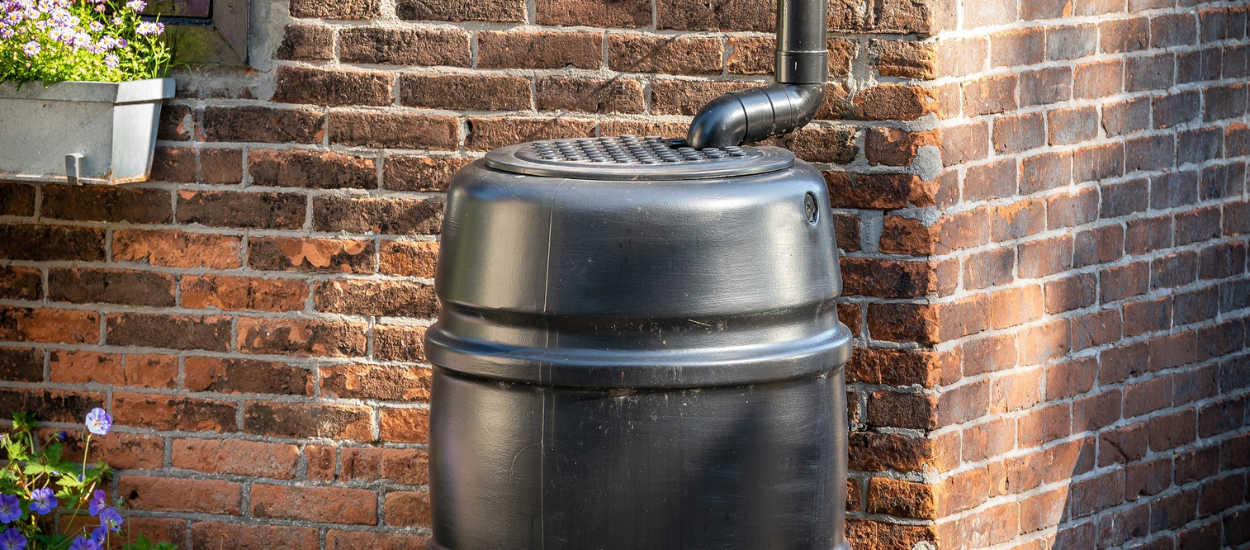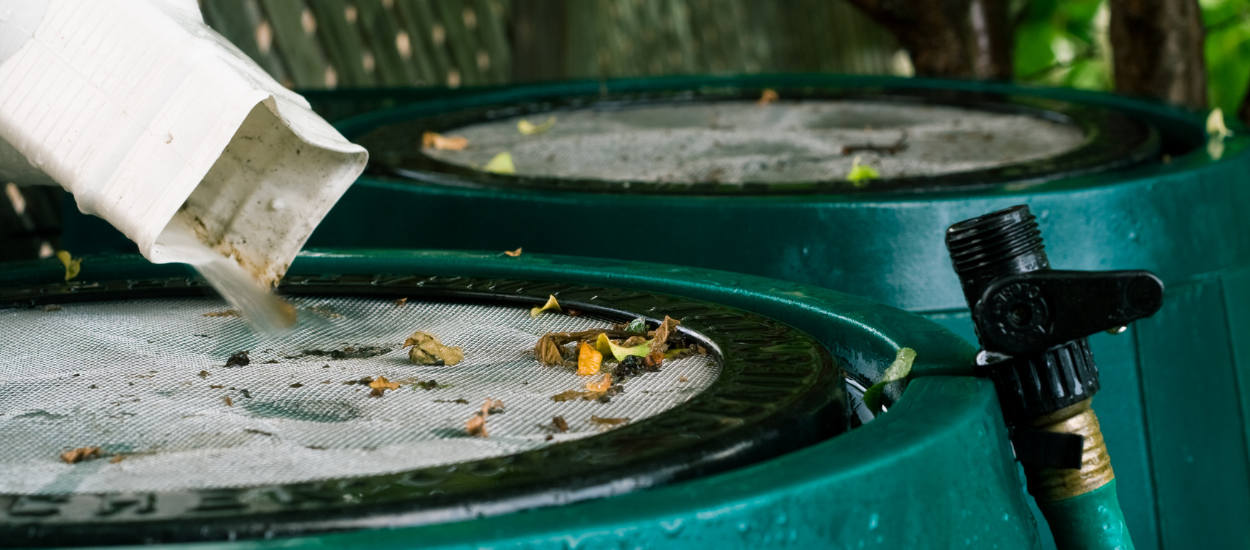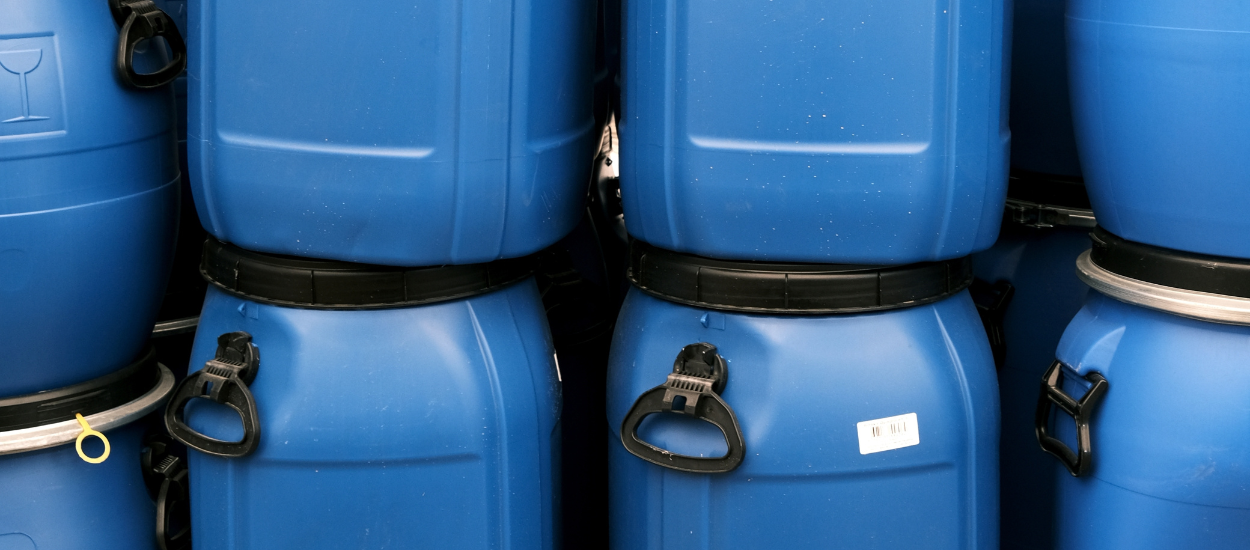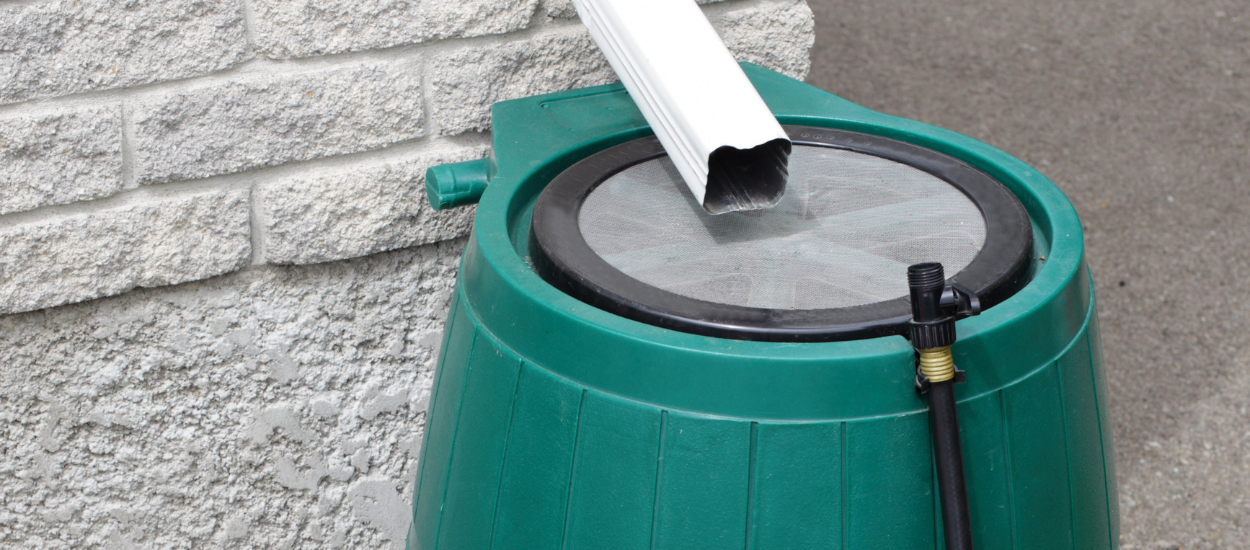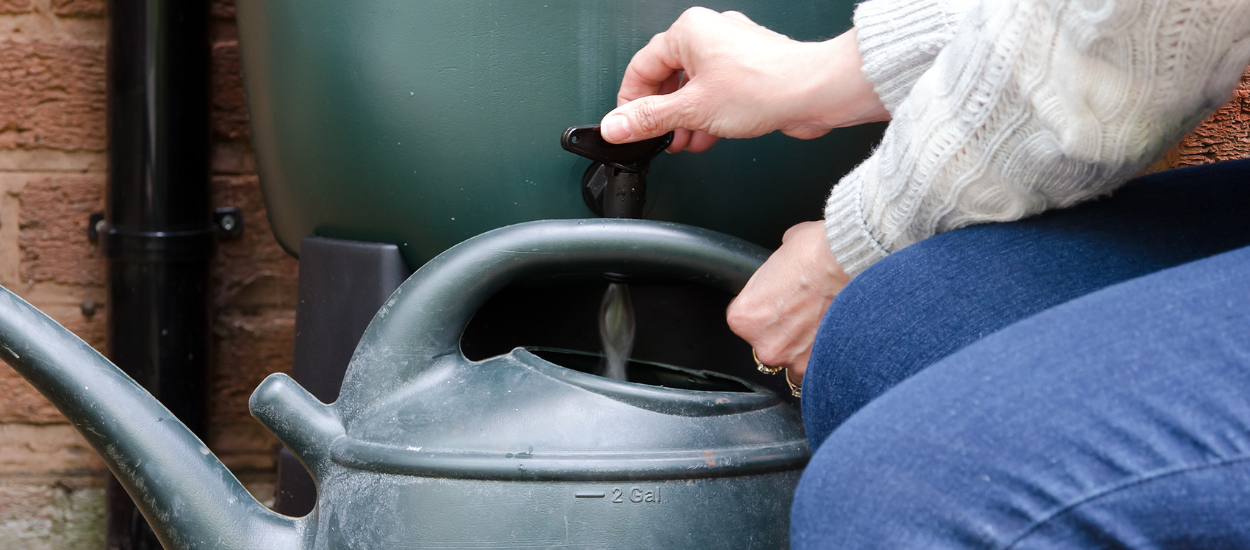The size of your system depends on a number of factors, including the size of your roof, the storage capacity of your rain barrel or cistern, and how you intend to use the water. A rough rule of thumb is that one inch of rain will produce 600 gallons of water for every 1,000 square feet of roof area.
Rain barrels or cisterns linked to roof drainage systems capture and store rainwater that can later be used to irrigate landscapes and gardens during periods of little rainfall. This practice can reduce potable water use while also helping to limit erosion and polluted runoff that harm our creeks. Just one inch of rain on a 1,000 square-foot roof produces 600 gallons of runoff.
Rain barrel and cistern rebates available for Marin Water customers
Thanks to funding from the Marin County Stormwater Pollution Prevention Program, Marin Water is currently able to provide enhanced incentives for residential and commercial customers who install rain catchment systems at their properties. Through this partnership with MCSTOPPP, Marin Water is offering customers $0.75 per gallon of water stored – with a cap of $2,000 per customer. The rebate is for new rain barrel installations only and cannot exceed system cost.
North Marin Water District customers can access this rebate at the NMWD web page.
DIY Recycled Rain Barrel GiveawayThrough a collaboration with EO Products, Marin Water is offering a DIY Rain Barrel Giveaway to customers. EO Products is a San Rafael-based essential oils producer focused on sustainable manufacturing, including putting its manufacturing products back into use, and has donated barrels previously used in its business operation to the District. These non-food-grade barrels can easily be converted into water storage barrels for use in residential and commercial rainwater catchment systems, enabling Marin Water customers to supplement their outdoor watering needs. With the free barrels, a few needed supplies and some DIY instructions, customers can create their own rain catchment systems at a reduced cost. *Note: Recycled barrels not eligible for rain barrel rebate. |
Purchasing your rain barrel and making it functional
Many hardware stores and other retailers offer ready-made rain barrels for purchase. These are fully functional rain barrels that are then ready to connect to your roof drainage system, following best practices ( see the connection tips outlined in the next section below).
For those wishing to take a more DIY approach, which typically involves converting a plastic drum or other storage container into a functional rain barrel, many retailers offer easy-to-install kits. Rain barrel diverter system "kits" come with all of the parts and instructions necessary to create a functioning rain barrel. These kits can often be purchased online too. The following short list links to various commercial retailers that provide kits and how-to resources.
Note: Marin Water is not responsible for content on third-party links and the below content is only being provided for convenience. The list is not comprehensive and does not constitute a recommendation or an endorsement by Marin Water. If an applicable business or entity would like to contribute to this list, please email the request to info@marinwater.org for consideration.
Rain Barrel Diverter System “kit”:
- EarthMinded Rain Barrel system - Home Depot or Amazon
- Blue Barrel Systems DIY Rain Barrel Kit
How-to resource for creating a functional rain barrel:
- Making a Rain Barrel (document with instructions, photos from Texas A&M System's AgriLife Extension)
- Installation of a Rain Barrel Kit (instructions and how-to video from EarthMinded Rain Barrels)
Creating a system with two or more barrels:
- BlueBarrel's DIY Rain Barrel Store (the site includes tools to help customize your system)
- Watch the video below for a primer on multi-barrel rainwater catchment systems
Connecting your system to your roof drainage system and putting it to use
Once you've selected your preferred rainwater catchment system, connecting it to your roof drainage system and putting it to use can be a breeze using best practices for these water-saving systems!
Some tips to get you started
- Choose a downspout on your house or garage that is close to the plants and garden you water most.
- Choose a downspout where your rain barrel’s overflow will soak into your own yard, and not your neighbors’ property.
- To direct water into your rain barrel, downspouts can be sawed and modified with an elbow or a downspout diverter kit can be installed.
- Barrels can be used by opening lids (if removable) and dipping watering cans in, or a spigot can be installed near the bottom to attach hoses and fill watering cans.
- Consider placing your rain barrels on concrete blocks to help with pressure if you're going to use a hose directly from the barrels to water your garden, as gravity will help move the water. It also raises the barrels to make spigot access easier for filling watering cans.
- Make sure rain barrels have an overflow pipe or downspout diverter to direct excess water away from your home when they’re full.
- All openings should be screened with 1/16” mesh to keep-out mosquitos and other debris.
- “Nonpotable Rainwater, Do Not Drink” signage is required by CA Plumbing code.
Tools needed for installation
Once you've decided the best system setup for your site, determine what tools and materials are needed to get the job done. Many systems provide the parts and tools needed for installation. These might include:
- Hacksaw
- Electric or cordless drill with hole saw and bits (various sizes)
- Caulking gun
- Hose bibb
- Overflow pipe
- 1/16" mesh for screening holes
- Silicone sealer or similar adhesive
Reminders
- Keep your rain barrel secured tightly to prevent children or animals from entering or falling in.
- Do not drink water from your rain barrel. Harvested rainwater should be used for irrigation purposes only.
- Regularly check rain barrel screens to remove accumulated debris.
Frequently asked questions
Raw stored rainwater should be used only for irrigation. It should not be used for cooking or human consumption.
Stored rainwater is primarily recommended for use as supplemental irrigation for ornamental plants. Because chemicals from housing materials, as well as bird and animal waste, can be washed into storage containers, utilizing rain catchment systems for edible gardens is not generally recommended. If property owners do wish to water edible gardens with stored rainwater, precautions should be taken, including using a screen for rain barrels, watering only the dirt – not the harvestable portions of a plant, and washing produce thoroughly before eating.
Marin Water and the North Marin Water District are offering $0.75 per gallon of water stored, and up to a maximum of $2,000 per home or business site.
Water savings vary depending on the size of your rainwater harvesting system, rainfall patterns, how you use the rainwater, and the size of your garden. For an in-depth guide to calculating your water storage needs, check out the San Francisco Public Utilities Commission’s Rainwater Harvesting Manual.
Overflow water should be directed to a drain or suitable rain garden that can absorb water onsite at an appropriate rate. Overflow must be directed away from your home or neighboring properties.
Check with your local building department to determine permitting requirements. Local requirements are sometimes more strict than statewide ones. California rules state that a permit is not needed if your rain barrel or cistern meets the following requirements:
- Cistern capacity is less than 5,000 gallons.
- Height-to -width ratio is less than 2-to-1.
- Captured rainwater is only used for non-spray irrigation.
- Rainwater system is installed on a foundation or platform to support the load, such as cinderblocks or compacted, level soil.
- Rainwater system does not require power or a makeup water supply connection.
It’s a device that diverts the season’s first, most polluted flow of rainwater away from your rain barrel. This device also removes any leaves which would clog the system. A first-flush diverter is recommended for all installations.
Rain barrels and cisterns should be inspected and cleaned seasonally. Before and after the rainy season, clean roof gutters, screens, overflow outlets and filters. Once a year, flush out any debris or buildup that may have accumulated on the bottom of the cistern. Repair leaks immediately.
Mosquitos look for standing water to lay their eggs. To prevent your rain catchment system from becoming a mosquito breeding ground, best practices call for 1/16" mesh covering all openings. This not only prevents mosquitos from entering, it also keeps debris out of any rainwater catchment system. Make your rain barrels even less appealing to mosquitos by keeping them away from direct sunlight.
Full code requirements can be found in Chapter 16 of the 2019 California Plumbing Code.
- Inverted 55-gallon barrels, connected underneath
- Simple downspout diverter also acts as overflow
- Spigot at bottom to allow all water to be drained out
- Decals indicating non-potable water
- 200-gallon cisterns connected via downspout diverter to large inlet with mesh screen
- Large overflow pipe is sized to keep up with high inflows and directs water away from building
- Spigots at the bottom of the cisterns
Yes. But a rebate application must be submitted within 90 days of the purchase of a rain barrel or cistern - and after installation. A legible, itemized receipt showing the purchase is also required, along with photos of the completed rain catchment system.
 Translate
Translate